Edward Grant Stockdale, Edwin Anderson Collins and Mary Pinchot Meyer:
Three Deaths and the Assassination of John F. Kennedy
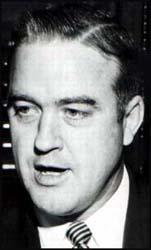

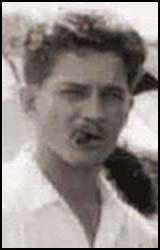
In August, 1966, William Penn Jones Jr., wrote an article in the Midlothian Mirror about the death of Lee E. Bowers. In the article he claimed that he had discovered thirteen deaths that were mysteriously related to the assassination of President John F. Kennedy.
Bowers was of course the man who was working in a high tower overlooking the Dealey Plaza in Dallas. He had a good view of the presidential motorcade and was able to tell the Warren Commission about the three cars that entered the forbidden area just before the assassination of John F. Kennedy.
Bowers also reported seeing two men standing near the picket fence on the Grassy Knoll. He added:
"These men were the only two strangers in the area. The others were workers whom I knew."
Bowers said the two men were there while the shots were fired.
Mark Lane interviewed Bowers for his book Rush to Judgment (1966):
"At the time of the shooting, in the vicinity of where the two men I have described were, there was a flash of light or, as far as I am concerned, something I could not identify, but there was something which occurred which caught my eye in this immediate area on the embankment. Now, what this was, I could not state at that time and at this time I could not identify it, other than there was some unusual occurrence - a flash of light or smoke or something which caused me to feel like something out of the ordinary had occurred there."
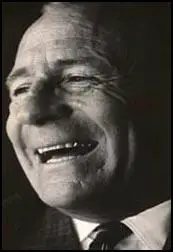
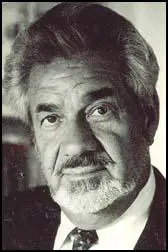
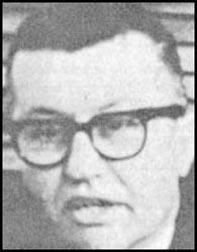
According to William Penn Jones Jr., Bowers received death threats after giving evidence to the Warren Commission and Mark Lane.
This article by Penn Jones was sent to Warren Hinckle, the editor of Ramparts. Hinckle was fascinated with this story and even drove to Jones’ home to discuss this list. Hinckle was impressed by his research and decided to ask one of his reporters, David Welsh, to check out this story.
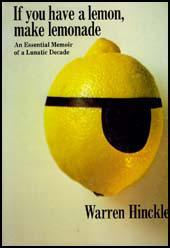

David Welsh reduced the original list down to ten. Welsh’s article on Jones’s story was published in November, 1966. In his autobiography, Hinckle claims that:
“The mysterious deaths story became an overnight sensation. Ramparts sold out, and went back on the presses. Penn Jones found himself catapulted to the status of instant folk hero.” (If You Have a Lemon, Make Lemonade, page 226)
Here are the ten people named in Welsh’s article:
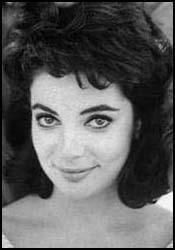
11-63 Murdered
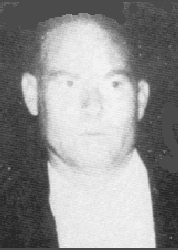
3-64 Murdered
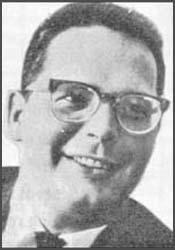
4-64 Murdered
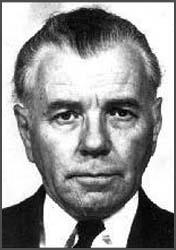
6-64 Heart Attack
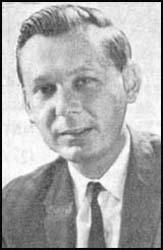
9-64 Murdered
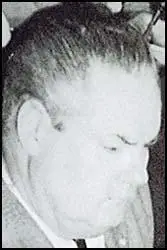
3-65 Heart Attack
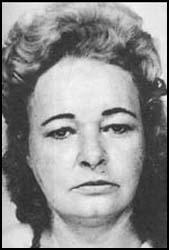
9-65 Road Accident
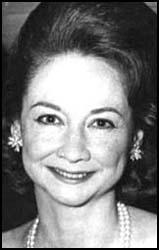
11-65 Drug Overdose
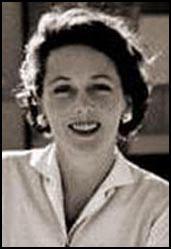
11-65 Cerebral Haemorrhage

8-66 Road Accident
It is an impressive list and I personally believe the deaths of at least 8 of these people are linked to the assassination of John F. Kennedy. These are in themselves linked together. For example, On 24th November, 1963, Bill Hunter and Jim Koethe of the Dallas Times Herald interviewed George Senator. Also there was the attorney Tom Howard. Earlier that day Senator and Howard had both visited Jack Ruby in jail. That evening Senator arranged for Koethe, Hunter and Howard to search Ruby's apartment. It is not known what was found but within 16 months all three men were dead. Hunter and Koethe had been murdered and Howard died of a heart attack (aged 41).


Another person linked to this story is Dorothy Kilgallen, She was also getting inside information from Ruby’s legal team and was involved in writing a book about the JFK assassination when she died of a drug overdose on 8 th November, 1965. William Penn Jones Jr. discovered that Kilgallen passed a copy of her manuscript to Florence Smith. She died two days after Kilgallen. Officially it was from a cerebral haemorrhage. What Penn Jones never discovered was Smith’s own connection to JFK. At the time of her death Smith used the name Florence Pritchett and had been having an affair with JFK since 1944. Apparently she was the love of his life but she was a divorced woman and so JFK could not marry her. However, they continued their relationship right up to he was assassinated in 1963.
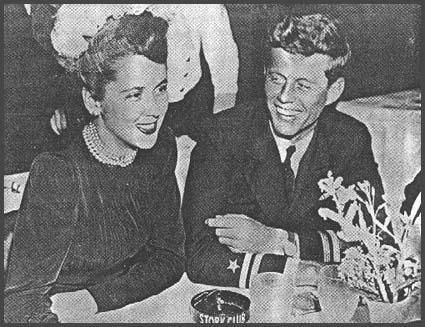
Penn Jones also did not know who Florence Pritchett was married to during this period. His name was Earl Smith, the US ambassador to Cuba when Fidel Castro took power.
On 27th August, 1960, Earl Smith gave evidence to the Senate Committee on the Judiciary. He argued that various agencies of the United States:
“directly and indirectly aided the overthrow of the Batista government and brought into power Fidel Castro.”
When asked to explain he claimed that he was referring to the State Department and the CIA.
In the period leading up to the assassination of JFK, Earl Smith played a significant role in funding and organizing anti-Castro Cuban exiles in Miami. Is it possible that rather than just being the person who received Kilgallen’s manuscript, Florence had been supplying information to Dorothy Kilgallen about the events surrounding the assassination of JFK.
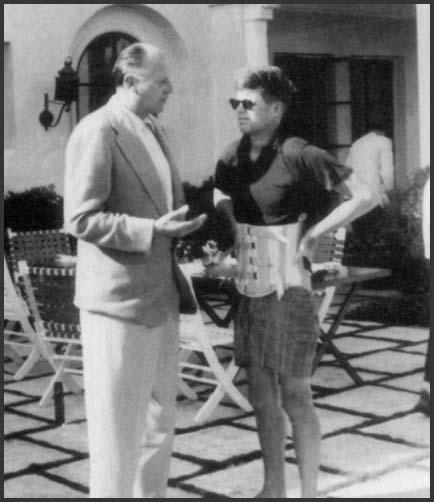
Since William Penn Jones Jr. wrote his article in August, 1966, extra names have been added to this list. In fact, in his book Crossfire, Jim Marrs compiled a list of 103 people who he described as “convenient deaths”. He went on to say that “these deaths would have been convenient for anyone not wishing the truth of the JFK assassination to become public.”
As Jim pointed out, a very large number of these witnesses died during the investigation carried out by the House Select Committee on Assassinations (1976-77). In fact Jim lists 14 people who died in 1977 who would have been part of this inquiry.
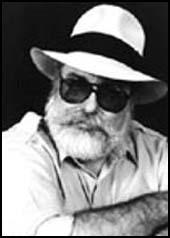
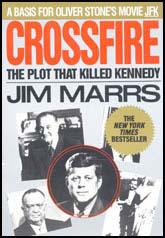
Today I am going to look at the deaths of three people who died who did not appear on Penn Jones’ original list. In fact, two of the three do not appear on any of these lists. There is a very good reason why Penn Jones was not able to identify these people. He of course concentrated on those who had been identified in the 1960s with being associated with the assassination. Either because they were witnesses, suspects or investigators of the crime.



The three people I will be speaking about never fitted into this category. It was only in March, 1976, when James Truitt gave an interview to the National Enquirer, that it became public knowledge that there might be a link between Mary Pinchot Meyer and the assassination of John F. Kennedy.
The other two, Edward Grant Stockdale and Edwin Anderson Collins, as far as I can tell, have never appeared in any books on the assassination. Although Stockdale is mentioned as a close friend of JFK in a couple of books about the former president. Stockdale and Collins highlight the importance of the use of modern technology to investigate the assassination. They have both been discussed on JFK Forums and have been written about by me on my website. This has resulted in people sending me further information about these people. Most of the information I have obtained has come in via email from people who I have never met. I have also interviewed people who knew Stockdale and Collins by email. In fact, living in the UK, it would have been impossible for me to get involved in investigating this case if it had not been for the internet.
I knew nothing about Grant Stockdale until his name was mentioned during an email exchange between Adele Edisen and myself. As most of you probably know, Adele is someone who had prior knowledge of the plot to kill Kennedy via Dr. Jose Rivera. Edisen told me that she thought Stockdale’s death was connected to the assassination.
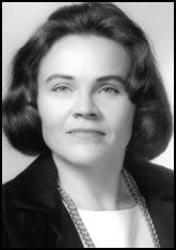

Research on Stockdale was not easy. According to Daniel Brandt at Namebase, the only mention of Stockdale in any published book was in The Dark Side of Camelot. Seymour Hersh claims that at the beginning of November, 1963, JFK asked Stockdale to raise $50,000 for his personal use. Stockdale told friends that the money had something to do with Bobby Baker.
Hersh interviewed Grant Stockdale’s son in 1996. He said that Stockdale was not the only one who was busy raising money for JFK to deal with this matter relating to Bobby Baker.
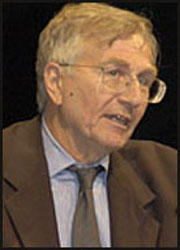
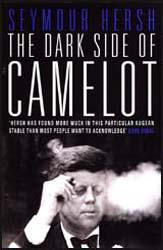
Nor was there much information on Stockdale on the web. However, there was one interesting account of Stockdale’s business activities that I will return to this later. Who then was Edward Grant Stockdale?

Grant Stockdale was born in Greenville, Washington County, Mississippi, in 1915. He obtained a business administration degree from the University of Miami and then worked as a salesman for a venetian blind company. Later he became a sales manager with the company. Stockdale also became involved in the real estate business and eventually became President of the Miami Junior Chamber of Commerce.
After the bombing of Pearl Harbor Stockdale enlisted in the United States Marine Corps. He served in the Pacific War Zone and took part in the fighting in the Marshall Islands and Okinawa. He was discharged as a First Lieutenant and remained with the rank of Major in the U.S. Marine Corps Reserves.
A member of the Democratic Party, Stockdale helped his friend, George Smathers, get elected to Congress in 1946. Three years later Smathers introduced Stockdale to John F. Kennedy, then a young Congressman from Massachusetts. Stockdale became increasingly interested in politics and was a member of the Florida State House of Representatives (1948-49). He was also a member of the Dade County Commission (1952 to 1956).
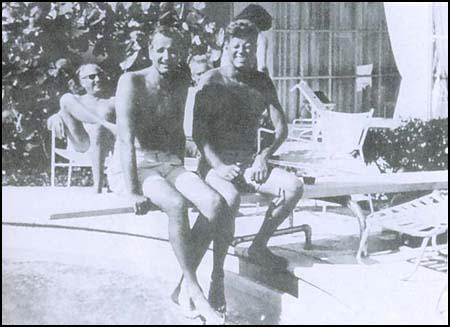
In 1959 Grant Stockdale was named director of the Florida State committee to elect Kennedy. After Kennedy won the nomination, Stockdale actively campaigned for him in West Virginia, Oregon, and New York. He was also a member of the Democratic Party's National Finance Committee.
Stockdale also formed a business partnership with George Smathers. Their company, Automatic Vending, was involved in providing vending machines to government institutions.
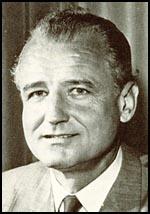
In March, 1961, President John F. Kennedy appointed Stockdale as Ambassador to Ireland. Later that year Automatic Vending was sued for improper actions in getting a contract at Aerodex.
Stockdale resigned as ambassador in July, 1962. Officially, the reason given was that he had found it too expensive as ambassador as he had been using his own money to entertain guests at the embassy. The real reason was the investigation being carried as a result of his activities with Automatic Vending.
It is these activities that provide a link to Bobby Baker. It was in during this period that Baker was being investigated for his role in another vending machine scandal.
In 1962 Bobby Baker had established the Serve-U-Corporation with his friend, Fred Black. Also involved were mobsters Ed Levenson and Benny Sigelbaum. The company was to provide vending machines for companies working on federally granted programs. The machines were manufactured by a company secretly owned by Sam Giancana and other mobsters based in Chicago. Stockdale, Smathers, Baker and Black had all entered the world of the vending machine scam.


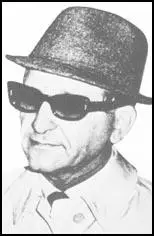
The centre of this and other Senate linked corruption activities was the Suite 8F Group. The name comes from the room in the Lamar Hotel in Houston where they held their meetings. A key figure in this group was Lyndon B. Johnson. Members of this group included businessmen from Texas who would after obtaining government contract. For example, George Brown and Herman Brown (Brown & Root), Jesse H. Jones (Reconstruction Finance Corporation), James Abercrombie (Cameron Iron Works), Hugh R. Cullen (Quintana Petroleum), James Elkins (Pure Oil Pipe Line), Morgan J. Davis (Humble Oil), Glenn McCarthy (McCarthy Oil and Gas Company), Ross Sterling (Humble Oil), Sid Richardson (Texas oil millionaire), Clint Murchison (Delhi Oil), Haroldson L. Hunt (Placid Oil), Eugene B. Germany (Mustang Oil Company) and Lawrence D. Bell (Bell Helicopters). This group also included political lobbyists such as Tommy Corcoran, Alvin Wirtz, Edward Clark, Fred Black and Bobby Baker.
These businessmen were put into contact with important politicians and political lobbyists such as Sam Rayburn (majority leader and chairman of the Interstate and Foreign Commerce Committee), Albert Thomas (chairman of the House Appropriations Committee), Richard Russell (chairman of the Committee of Manufactures, Committee on Armed Forces and Committee of Appropriations), James Eastland (chairman Judiciary Committee), Benjamin Everett Jordan (chairman of the Senate Rules Committee), Robert Anderson (Secretary of the Navy and Secretary of the Treasury), John Connally (Secretary of the Navy), Fred Korth (Secretary of the Navy), George Smathers (chairman of the Finance Committee) and Robert Kerr.
Attorney General Robert Kennedy began investigating the activities of Bobby Baker. This investigation resulted in evidence that several leading politicians were involved in several cases of corruption that involved the granting of government contracts. This included Lyndon B. Johnson and Fred Korth, JFK’s Navy Secretary, who had both been named as taking rake-offs in the awarding of the $7 billion contract for a fighter plane, the TFX, to General Dynamics.
In his autobiography, Forty Years Against the Tide (1978), Carl Curtis, a senator from Nebraska, revealed that John Williams, who was leading the investigation into the activities of Bobby Baker, Lyndon Johnson and Fred Korth, was receiving information from Robert Kennedy. Was this an attempt to clean up corruption in the Democratic Party? If it was it seemed to be working. Bobby Baker resigned on 7 th October, 1963. At the end of October, Fred Korth resigned as Navy Secretary, because of the TFX contract.
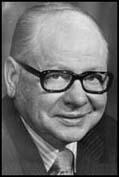
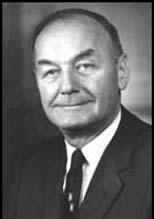
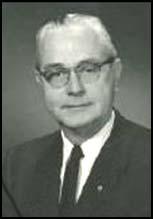
Lyndon B. Johnson remained in office. Although JFK’s secretary, Evelyn Lincoln, told friends that Johnson would be gone before the 1964 presidential elections. It seems that JFK had already decided that Terry Sanford was going to replace LBJ as vice president.
We also know that on the day of the assassination, a former business associate of Bobby Baker's, Don B. Reynolds told B. Everett Jordan and his Senate Rules Committee that LBJ had demanded that he provided kickbacks in return for this business. Reynolds also told of seeing a suitcase full of money which Baker described as a "$100,000 payoff to Johnson for his role in securing the Fort Worth TFX contract". His testimony came to an end when news arrived that President John F. Kennedy had been assassinated.
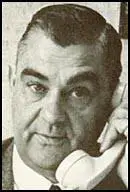
How does Grant Stockdale fit into this story? Well I think the link is Stockdale’s relationship with George Smathers, Bobby Baker and John F. Kennedy. One piece of important information that existed on the web came from a passage in William Torbitt’s document, Nomenclature of an Assassination Cabal (1970). This document has been put online. Torbitt is not his real name. He claims that he was a lawyer working in the south western part of the United States. After completing a law degree from the University of Texas he worked as a prosecuting attorney. He admits that his clients includes people involved in committing political murder. He claims he has also represented people involved in the "financial dealings of organized crime in Texas".
According to Jim Marrs, Torbitt’s real name was David Copeland. Jim interviewed him while he was working for the Fort Worth Telegram in the early 1970s. Copeland told Jim that he had two main sources for his book, a FBI agent and an agent with the Secret Service. In his book, Copeland claims that JFK was assassinated by a:
"... fascist cabal... who planned to lay the blame on honest right-wing conservatives, if their first ploy, to lay the blame on Oswald and the Communists, was not bought."
Now I believe that there is evidence to suggest this was the case. For example, Larrie Schmidt and Bernard Weissman seem to have been set-up as possible right-wing “fall guys” who were in Dallas on the day of the assassination. I think it is possible that Copeland was also doing work for the Suite 8F Group based in Houston. This group of politicians and businessmen were central to the network of corrupt activities taking place in Texas.
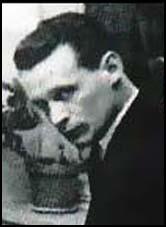
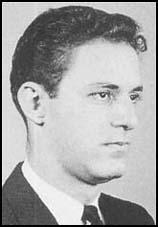
This is what David Copeland has to say about Grant Stockdale:
"Grant Stockdale, ex-United States Ambassador to Ireland and former George Smathers Administrative Assistant and a stock holder and officer in Bobby Baker's vending machine and Florida land transactions, knew and was closely associated with almost all of the top figures in the (assassination) cabal”.
Officially, Grant Stockdale left his government post in Ireland in July 1962 in order to make some money. According to his son, Grant Stockdale III, he was in serious financial difficulties and returned to Miami where he became consultant to another vending machine company which had contracts at Cape Canaveral.
We also know that in Stockdale was collecting money for JFK and this was linked in some way to Bobby Baker and Lyndon B. Johnson. According to his son, Stockdale was concerned that people might think this money was really for himself rather than JFK as they knew that in November 1963 he was still having financial difficulties.
Four days after the assassination of JFK, Stockdale flew to Washington and talked with Robert Kennedy and Edward Kennedy. On his return Stockdale told several of his friends that "the world was closing in." On 1st December, he spoke to his attorney, William Frates who later recalled:
"He started talking. It didn't make much sense. He said something about 'those guys' trying to get him. Then about the assassination."
Grant Stockdale died on 2nd December, 1963 when he fell (or was pushed) from his office on the thirteenth story of the Dupont Building in Miami. Stockdale did not leave a suicide note but his friend, George Smathers, claimed that he had become depressed as a result of the death of John F. Kennedy. This view was also supported by Stockdale’s wife.
Did Grant Stockdale know who assassinated JFK. If so, is this why he flew to Washington for a meeting with the Kennedy brothers. According to an article written by Miami Herald Reporter John B. McDermott, Stockdale did give information about the assassination to the Kennedys. However, this resulted in Edward Kennedy calling Grant Stockdale’s wife and expressed "anxiety over Stockdale’s mental state."
This report and the accompanying comments made by Mrs Stockdale and George Smathers, convinced most people that Grant Stockdale had been suffering from depression and that he had committed suicide. However, in an email that was sent by Anne Stockdale to Adele Edisen in June 2004, she claims that her mother only made these statements because she feared for the lives of her children.
Anne Stockdale also claimed that JFK had asked her father to carry out some spying mission in Miami. In the email she writes:
“I believe one of the reasons Daddy was killed was because he knew that the Government was being run by the Military Complex. The Military Complex didn't want the American People to realize (and still don't ) that they were calling the shots. Daddy knew he was being followed... & he told Mom that they were going to get him... and they did. There was an attempt on my life also several days after Daddy's funeral . I realize now that this was a scare tactic to silence my Mother... i.e. if you speak about anything, Your kids are dead. It worked!!”
If we go back to the Torbitt/Copeland passage on Grant Stockdale. He claims that he was president of Serve-U Corporation. I asked Larry Hancock to check out Serve-U Corporation. He discovered that officially, Stockdale was neither an officer or a stockholder of the company. The president of the Serve-U Corporation was actually a man called Eugene Hancock. The story really gets interesting when you look at the Miami Herald account of the Stockdale’s funeral.
“Funeral Services were held on Wednesday, December 4, 1963, at St. Stephens Episcopal Church with 200 people attending. The blue-and-gold Ambassadors' flag was draped over the coffin. Pall-bearers were Senator George Smathers, Attorney William C. Gaither, former State Senator R.B. Gautier, Jr., former U. of Miami football star and team leader Eddie Dunn, Stockdale's business associate Eugene Hancock, and Realtor Walter Etling. Burial was arranged with the Van Orsdel Coral Gables Mortuary at Woodlawn Park Cemetery.”
It would seem that Eugene Hancock was Grant Stockdale’s front man. Did Stockdale obtain information about the assassination of JFK via his business contacts with Bobby Baker and Fred Black? Or was it via his partner, George Smathers, a key figure in the anti-Castro community in Miami? Was he horrified when he discovered that those rumours of a plot to kill JFK came true? Did he decide to pass this information onto the Kennedy brothers? We now know that at this time Robert Kennedy did not want a full investigation into the assassination. However, there was no guarantee that Stockdale would not pass his story onto others who might have wanted to disclose the names of the conspirators. Stockdale had to die. Not only because he could not be trusted to keep his information to himself but as a warning to all those who might have been tempted to go public at this time.
The second person I want to discuss is Edwin Anderson Collins. He is another character whose name does not appear in any of the books on the assassination of JFK. Collins was born in Shreveport, Louisiana. He joined the United States Marines and was a member of the Underwater Demolitions Team (UDT).
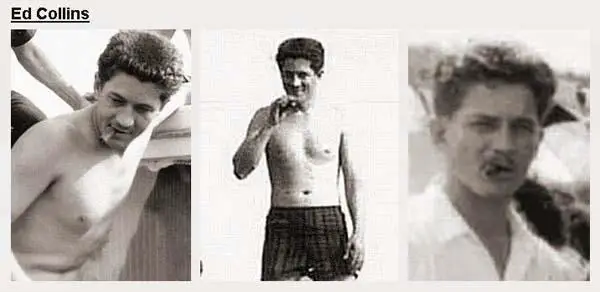
Collins held extreme right wing political views and according to one source he attempted to persuade the Ku Klux Klan and the John Birch Society to work together against the administration of JFK.
Collins was a member of Interpen (Intercontinental Penetration Force) that was established in 1961 by Gerry P. Hemming. This group of experienced soldiers were involved in training members of the anti-Castro groups funded by the CIA and right-wing businessmen.
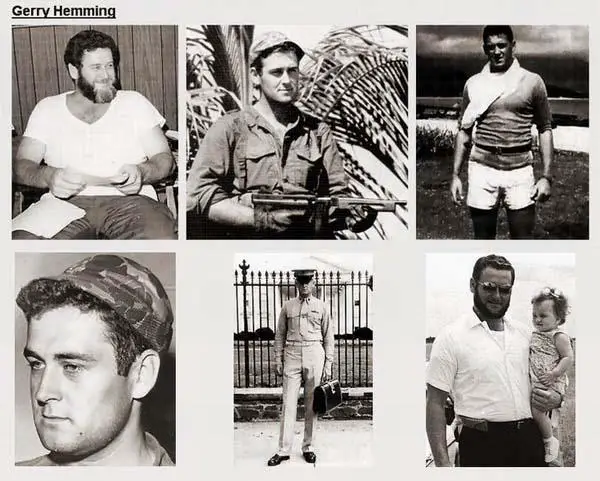
On 25th September, 1963, Silvia Odio had a visit from three men who claimed they were from New Orleans. Two of the men, Leopoldo and Angelo, said they were members of the Junta Revolucionaria Cubana (JURE). The third man, Leon, was introduced as an American sympathizer who was willing to take part in the assassination of Fidel Castro. After she told them that she was unwilling to get involved in any criminal activity, the three men left.
The following day Leopoldo phoned Odio and told her that Leon was a former Marine and that he was an expert marksman. He added that Leon had said:
“we Cubans, we did not have the guts because we should have assassinated Kennedy after the Bay of Pigs”.
In her recently published book, Farewell to Justice (2005) Joan Mellen argues that Bernardo De Torres was Leopoldo and Angel Murgado was Angelo. However, I have a source, a former member of Interpen, who believes that Edwin Collins was Angelo. He claims that Collins was also involved in the assassination of JFK.
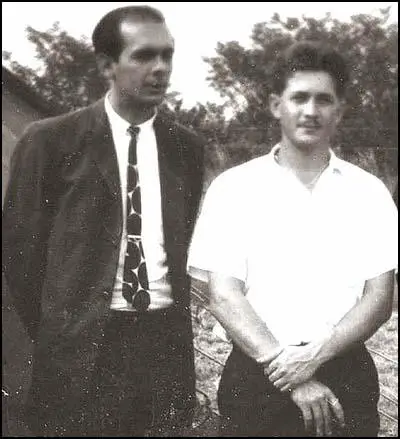
My source also claims that another member of Interpen murdered him in 1964 because he could not be trusted to keep quiet about what he knew about the assassination. Officially, Collins was drunk and that he had dived overboard to recover a dinghy which had cast adrift that night.
I put these claims to Gerry Hemming. He rejects the idea that Collins was involved in the assassination. In fact, he claims that he was playing cards with Jim Lewis, Dick Whatley, Bobby Willis and Bill Dempsey in Miami on the day JFK was killed.
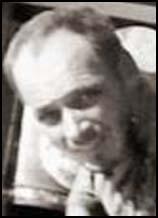
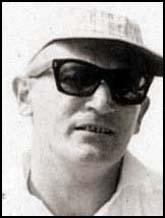

However, he does admit that Edwin Collins was murdered. Gerry Hemming and Steve Wilson identified the body. According to Hemming, it was clear that he had been murdered. Not because of what he knew about JFK but by followers of Fidel Castro.
“Edwin Anderson Collins was murdered by Castro "fellow-travelers" upon their discovery of his identity, and just a few weeks after he was tasked to penetrate their "protest march" from Canada, down the east coast, and on to Havana, and GITMO. Steve Wilson and I identified his body at the Medical Examiner's morgue, and when I questioned an assistant there as to the severe lacerations, cuts and bruises on Eddy's face and scalp - he responded that: "This was most likely due to crabs and other critters munching on the corpse post-mortem!!"
Collins was not the only member of Interpen to die in this way. Jim Lewis, who had been playing cards with Collins on the day of the assassination, died in a similar boating accident in 1970.
There is very little published information on my first two subjects. This is not true of my third subject, Mary Pinchot Meyer. However, it was not until March, 1976, that the public became aware that there might be a link between her and the assassination of JFK.
Mary Pinchot was born on 14th October, 1920. Her father Amos Pinchot, was a wealthy lawyer who helped fund the radical journal, The Masses. He was also a leading figure in the Progressive Party. Her mother, Ruth Pinchot, was a journalist who worked for worked for magazines such as The Nation and The New Republic.
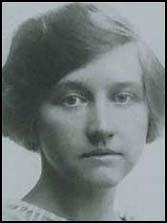
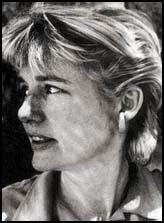
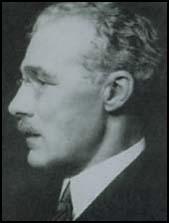
As a child Mary was brought into contact with left-wing intellectuals. People like Mabel Dodge, Crystal Eastman, Max Eastman, Louis Brandeis, Robert La Follette and Harold Ickes were regular visitors at their Grey Towers home in Milford, Pennsylvania.
Mary attended Brearley School and Vassar College. In 1938 she began going out with William Attwood. It was while with Attwood at a dance held at Choate that she met John F. Kennedy for the first time.
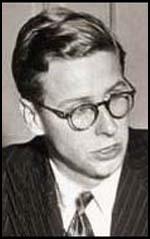
While at college Mary became interested in left-wing politics. Her father considered her to be a communist. That was probably going too far but we do know that she joined the American Labor Party during this period. As a result, the Federal Bureau of Investigation (FBI) started a file on Meyer's political activities. Mary, like her parents, was also a committed pacifist.
In 1944 Mary met Cord Meyer, a lieutenant in the US Marines who was recovering from serious shrapnel injuries that had resulted in him losing an eye. The couple married on 19th April, 1945. Soon afterwards the couple went to San Francisco to attend the conference that established the United Nations. Cord went as an aide to Harold Stassen, whereas Mary, who was working for the North American Newspaper Alliance at the time, was one of the reporters sent to cover this important event.
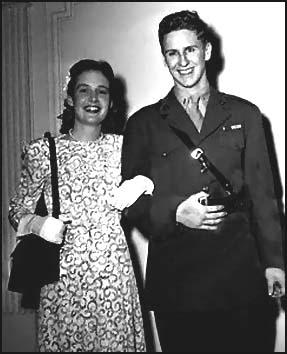
Cord Meyer had been shocked by the dropping of the atom bombs on Hiroshima and Nagasaki. After the war Meyer commissioned a film by Pare Lorentz called The Beginning or the End. Meyer wanted this film to be the definitive statement about the dangers of the atomic age. Cord wrote at the time: "Talked with Mary of how steadily depressing is our full realization of how little hope there is of avoiding the approaching catastrophe of atomic warfare."
The following year Meyer published a book about his war experiences, Waves of Darkness. Meyer expressed pacifist views in the book: "The only certain fruit of this insanity will be the rotting bodies upon which the sun will impartially shine tomorrow. Let us throw down these guns that we hate."
For a while Mary worked as an editor for the Atlantic Monthly. Her first child Quentin was born in 1945. After the birth of Michael in 1947 she became a housewife but still managed to attend classes at the Art Students League in New York City.
The Meyers were advocates of world government. In May, 1947, Cord Meyer was elected president of the United World Federalists. Under his leadership, membership of the organization doubled in size. Albert Einstein was one of his most important supporters and personally solicited funds for the organization. Mary wrote for its journal, The United World Federalists.
In 1951 Cord Meyer joined the Central Intelligence Agency. According to his memoirs, Meyer was recruited by Allen W. Dulles. However, I suspect that Meyer had been working undercover for the CIA for several years. Between 1947 and 1951 Meyer had been involved with a series of left-wing groups, including the International Cooperative Alliance, the International Confederation of Free Trade Unions, the Indian Socialist Party and the Congress of Peoples Against Imperialism. It is almost certain that this had been done on behalf of the CIA.
Meyer was assigned to work under Frank Wisner, director of the Office of Policy Coordination (OPC). This became the espionage and counter-intelligence branch of the CIA. Wisner was also in charge of Operation Mockingbird, the ultra-secret program to influence the mass media . According to Deborah Davis (Katharine the Great: Katharine Graham and the Washington Post): Meyer was Mockingbird's "principal operative".
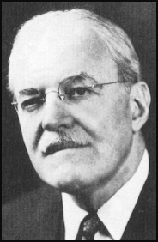
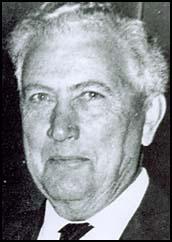
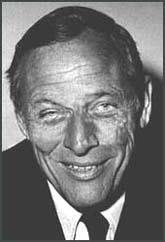
In November, 1954, Meyer replaced Thomas Braden as head of the CIA’s International Organizations Division. Meyer began spending a lot of time in Europe. One of Meyer's tasks was to supervise Radio Free Europe and Radio Liberty, the United States government broadcasts to Eastern Europe.
In 1958, Mary filed for divorce. In her divorce petition she alleged "extreme mental cruelty”. It is possible that Cord Meyer’s drift to the right was a factor in this incompatibility. After leaving Meyer she maintained her friendships with those who held more liberal views than her former husband. This included a relationship with the artist, Kenneth Noland.
Art became very important to Mary and her sister, Antoinette Pinchot and her husband Ben Bradlee, allowed her to set up a studio in their converted garage.

It seems that not only the FBI kep a file on the activities of Mary Pinchot Meyer. According to Nina Burleigh (A Very Private Woman) James Angleton began bugging Mary's telephone and bedroom after she left Cord Meyer. This information came from an interview with Joan Bross, the wife of John Bross, a high-ranking CIA official. Angleton became a regular visitor to the family home and took Mary's sons fishing.
In October 1961, Mary began visiting John F. Kennedy in the White House. It was about this time she began an affair with the president. Mary told her friends, Ann and James Truitt, that she was keeping a diary about the relationship.
In 1962 Mary made contact with Timothy Leary, the director of research projects at Harvard University. Leary supplied LSD to Mary who used it with Kennedy. Leary also claimed that Mary helped influence Kennedy's views on nuclear disarmament and rapprochement with Cuba.
Kennedy aide, Meyer Feldman, claimed in an interview with Nina Burleigh that the president might have discussed substantial issues with her: "I think he might have thought more of her than some of the other women and discussed things that were on his mind, not just social gossip."
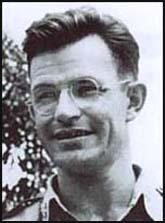

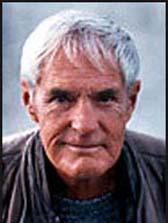
In January, 1963, Philip Graham, the publisher of the Washington Post, attended a convention of American newspaper editors in Phoenix. Graham, who was suffering from alcoholism, disclosed at the meeting that John F. Kennedy was having an affair with Mary Meyer. No newspaper reported this incident but Kennedy now attempted to bring an end to the relationship. However, they continued to see each other.
According to his biography, Flashbacks, Timothy Leary claims that Mary phoned him the day after Kennedy was assassinated:
"They couldn't control him any more. He was changing too fast. He was learning too much... They'll cover everything up. I gotta come see you. I'm scared. I'm afraid."
In the summer of 1964 Meyer told friends that she believed someone had been inside her house while she was away. On another occasion she told Elizabeth Eisenstein that "she thought she had seen somebody leaving as she walked in". Mary reported these incidents to the police. Eisenstein said Mary was clearly frightened by these incidents.
On 12th October, 1964, Mary Pinchot Meyer was shot dead as she walked along the Chesapeake and Ohio towpath in Georgetown. Henry Wiggins, a car mechanic, was working on a vehicle on Canal Road, when he heard a woman shout out: "Someone help me, someone help me". He then heard two gunshots. Wiggins ran to the edge of the wall overlooking the tow path. He later told police he saw "a black man in a light jacket, dark slacks, and a dark cap standing over the body of a white woman."

Detectives examine the body of Mary Meyer
Mary appeared to be killed by a professional hitman. The first bullet was fired at the back of the head. She did not die straight away. A second shot was fired into the heart. The evidence suggests that in both cases, the gun was virtually touching Mary’s body when it was fired. As the FBI expert testified, the “dark haloes on the skin around both entry wounds suggested they had been fired at close-range, possibly point-blank”.
Soon afterwards Raymond Crump, a black man, was found not far from the murder scene. He was arrested and charged with Mary's murder. Police tests were unable to show that Crump had fired the .38 caliber Smith and Wesson gun. There were no trace of nitrates on his hands or clothes. Despite an extensive search of the area no gun could be found. This included a two day search of the tow path by 40 police officers. The police also drained the canal near to the murder scene. Police scuba divers searched the waters away from where Mary was killed. However, no gun was ever found. Nor could the prosecution find any link between Crump and any Smith and Wesson gun.
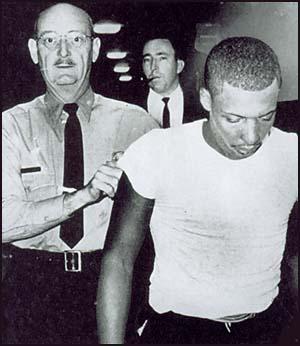
Arrest of Ray Crump
Crump’s lawyer, Dovey Roundtree, was convinced of his innocence. A civil rights lawyer who defended him for free, she argued that Crump was so timid and feeble-minded that if he had been guilty he would have confessed everything while being interrogated by the police.
No newspaper reports identified the true work of her former husband, Cord Meyer. He was described as a government official or an author. A large number of journalists knew that Meyer had been married to a senior CIA officer. They also knew that she had been having an affair with John F. Kennedy. None of this was reported. In fact, the judge, ruled that the private life of Mary Meyer could not be mentioned in court.
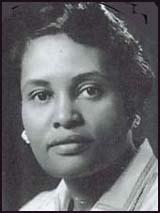
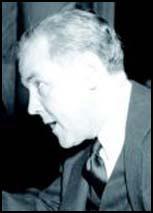
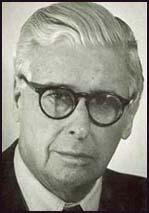
The trial judge was Howard Corcoran. He was the brother of Tommy Corcoran, a close friend of Lyndon B. Johnson. Corcoran had been appointed by Johnson soon after he became president. It is generally acknowledged that Corcoran was under Johnson’s control. His decision to insist that Mary’s private life should not be mentioned in court was very important in disguising the possible motive for the murder. This information was also kept from Crump’s lawyer, Dovey Roundtree. Although she attempted to investigate Mary's background she found little information about her: "It was as if she existed only on the towpath on the day she was murdered."
During the trial Wiggins was unable to positively identify Raymond Crump as the man standing over Meyer's body. The prosecution was also handicapped by the fact that the police had been unable to find the murder weapon at the scene of the crime or to provide a credible motive for the crime. On 29th July, 1965, Crump was acquitted of murdering Mary Meyer. The case remains unsolved.
In March, 1976, James Truitt, a former senior member of staff at the Washington Post, gave an interview to the National Enquirer. Truitt told the newspaper that Meyer was having an affair with John F. Kennedy when he was assassinated. He also claimed that Meyer had told his wife, Ann Truitt, that she was keeping an account of this relationship in her diary. Meyer asked Truitt to take possession of a private diary "if anything ever happened to me".
Ann Truitt was living in Tokyo at the time that Meyer was murdered on 12th October, 1964. She phoned Bradlee at his home and asked him if he had found the diary. Bradlee, who claimed he was unaware of his sister-in-law's affair with Kennedy, knew nothing about the diary. He later recalled what he did after Truitt's phone-call:
"We didn't start looking until the next morning, when Tony and I walked around the corner a few blocks to Mary's house. It was locked, as we had expected, but when we got inside, we found Jim Angleton, and to our complete surprise he told us he, too, was looking for Mary's diary."
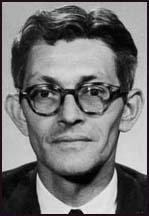
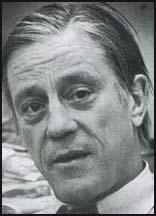
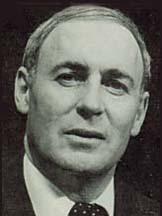
James Angleton, CIA counterintelligence chief, admitted that he knew of Mary's relationship with John F. Kennedy and was searching her home looking for her diary and any letters that would reveal details of the affair. According to Ben Bradlee, it was Mary's sister, Antoinette Bradlee, who found the diary and letters a few days later. It was claimed that the diary was in a metal box in Mary's studio. The contents of the box were given to Angleton who claimed he burnt the diary. Angleton later admitted that Mary recorded in her diary that she had taken LSD with Kennedy before "they made love".
Leo Damore , the author of Senatorial Privilege, was working on a book on Mary Pinchot Meyer, entitled, Burden of Guilt. He claimed in an article that appeared in the New York Post that the reason Angleton and Bradlee were looking for the diary was that:
"She (Meyer) had access to the highest levels. She was involved in illegal drug activity. What do you think it would do to the beatification of Kennedy if this woman said, 'It wasn't Camelot, it was Caligula's court'?"
There is another possible reason why both Angleton and Bradlee were searching for documents in Meyer's house. Meyer had been married to Cord Meyer, a leading CIA operative involved in a variety of covert operations in the early 1950s. Were they worried that Meyer had kept a record of these activities? Was this why Mary Pinchot Meyer had been murdered?
After leaving the CIA in 1977 Cord Meyer wrote several books including an autobiography, Facing Reality: From World Federalism to the CIA. In the book Meyer commented on the murder of his wife:
"I was satisfied by the conclusions of the police investigation that Mary had been the victim of a sexually motivated assault by a single individual and that she had been killed in her struggle to escape."
Carol Delaney, the longtime personal assistant to Meyer, later admitted:
"Mr. Meyer didn't for a minute think that Ray Crump had murdered his wife or that it had been an attempted rape. But, being an Agency man, he couldn't very well accuse the CIA of the crime, although the murder had all the markings of an in-house rubout."
In 1998 Nina Burleigh published A Very Private Woman: The Life and Unsolved Murder of Presidential Mistress Mary Meyer. In the book Burleigh implies that Ray Crump was the murderer of Mary Pinchot Meyer. In an email to me she claimed that she was 95% certain that Crump was the murderer.
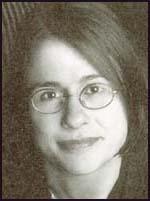
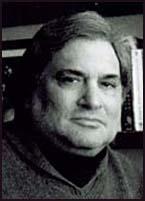
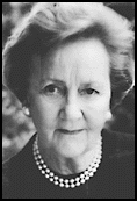
One of Burleigh's main sources for her book was Peter Janney. His father, Wistar Janney, a senior official in the CIA, was a close friend of both Mary and Cord Meyer. So was his mother, Mary Janney, who was one of her roommates at Vassar. Peter Janney had also been close to Mary's son Michael, who was killed in a road accident in December, 1956.
As a result of writing about Mary Pinchot Meyer on my website and on my JFK Forum, Peter Janney contacted me by email. He claimed that he had provided evidence to Nina Burleigh that the CIA had been involved in the murder of Mary. However, Burleigh had chosen to ignore this evidence.
Janney had been researching the case for many years and is currently writing a book about the case. A summary of this work should be appearing soon in Vanity Fair magazine. Janney is also hoping to make a feature film, entitled Lost Light, about the life and death of Mary Pinchot Meyer.
I have seen a copy of this article and it contains fascinating material on the case. Janney has obtained Leo Damore's manuscript, Burden of Guilt. Damore committed suicide in October, 1995, and the book was never published. In the manuscript Damore reveals the name of the man who murdered Mary Pinchot Meyer. The man who confessed to Damore was William L. Mitchell. It was Mitchell who appeared as a witness during the trial. Mitchell claimed he was running on the C&O towpath and saw a black man following Meyer on the day she was murdered. Mitchell, a former FBI undercover agent, claimed he had been recruited to murder Meyer. He said the murder was linked to the assassination of John F. Kennedy.
In 2003, C. David Heymann, published the book, The Georgetown Ladies' Social Club. The book looks at the lives of Katharine Graham (the wife of Philip Graham), Evangeline Bruce (the wife of David Bruce), Lorraine Cooper (the wife of John S. Cooper), Pamela Harriman (the wife of Averell Harriman) and Sally Quinn (the wife of Ben Bradlee). He also writes about Mary Pinchot Meyer in the book. During his research Heymann interviewed Cord Meyer. Heyman was in fact one of the last people to speak to Meyer before he died. One of his questions concerned the death of his wife. Cord Meyer replied:
"My father died of a heart attack the same year Mary was killed, " he whispered. "It was a bad time." And what could he say about Mary Meyer? Who had committed such a heinous crime? "The same sons of bitches," he hissed, "that killed John F. Kennedy."
